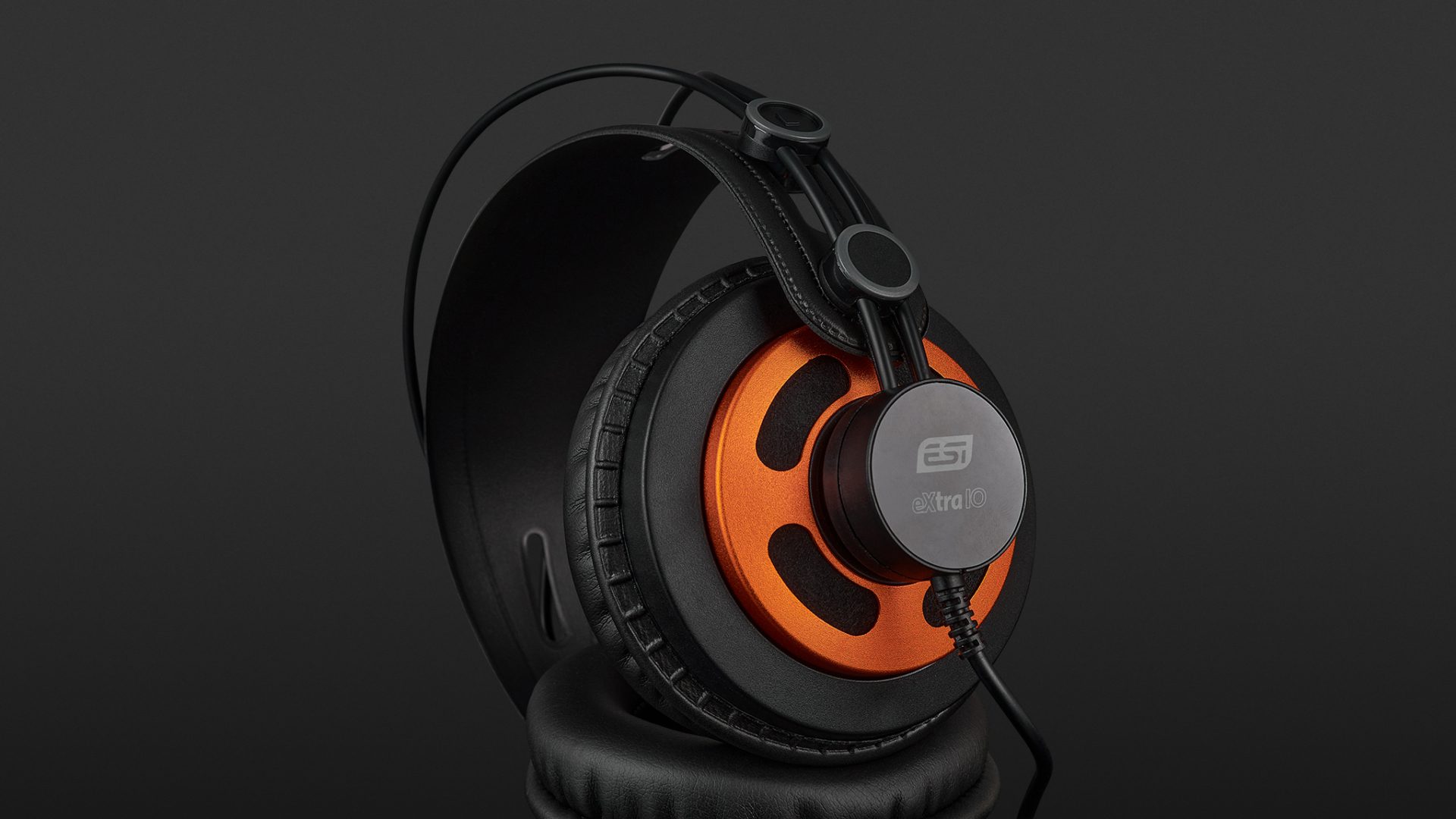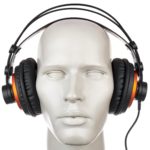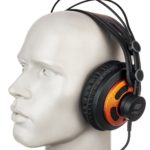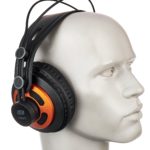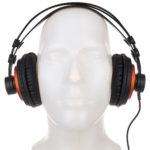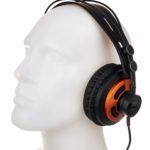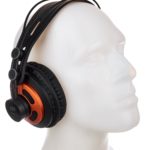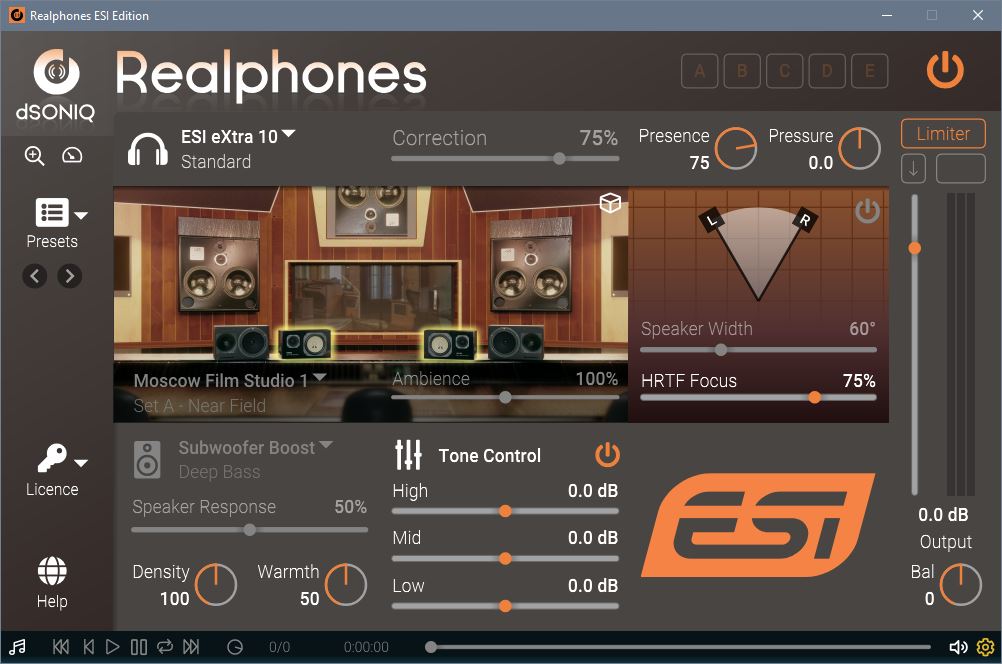With the eXtra 10, ESI succeeds in creating an appealing tool that meets the requirements of the studio. In combination with dSoniq’s Realphones ESI Edition, the headphones recreate acoustic simulations of various monitoring situations in a recording studio, delivering a finely resolved sound image with balanced sound reproduction across the entire sound spectrum. This combination offers convenient switching between different virtual monitoring situations. In addition, the excellent outward attenuation of the semi-open system also allows for use during sound recordings.
I would have liked to see a version of the software for iOS and Android so that I could also use this winning combination for pure music enjoyment on the move. The recommended retail price of 59 Euros is absolutely reasonable and deserves our price-performance recommendation!
The German manufacturer ESI offers a wide range of products for use in professional sound and home studios. With attractive prices and practical features, they are aimed at beginners as well as customers in the mid-price bracket. With the eXtra 10 model, the manufacturer makes its debut in this segment of the very competitive headphone market.

For the purchase price of 59 Euros, you get a lightweight wired over-ear system with a semi-open housing design. The package also includes free modelling software, both as a stand-alone version and as a plug-in, for sound adjustments and binaural listening, which, when used in combination with the device we tested, penetrated listening areas that were otherwise reserved for much more expensive headphones.
The eXtra 10 are designed for musicians who need a device for various applications such as recording and monitoring but also for editing and mixing in the studio. The almost three-metre-long connection cable has a detachable gold-plated 6.3-mm stereo jack plug, under which there is a 3.5-mm mini-jack, which can be used for connecting to smartphones. These headphones, which are manufactured in the Far East, arrive in a sturdy cardboard box with an inlay that was designed to fit the headphones perfectly, making it suitable for repeated transportation uses.
In practice
The eXtra 10 have a semi-open system with removable round plastic cushion pads. The design of the classy all-black exterior is made eye-catching by the bright orange of the two outer sides of the earcups. And it is not just the exterior that is impressive. Instead of a fixed height adjustment to adapt to different head shapes, the manufacturer uses a flexible, smoothly adjustable system that adapts perfectly thanks to a balanced pull mechanism. In addition, the earcups have a vertically movable mechanism for optimal adjustment to different head shapes. Exerting a light to medium pressure, they offer wearing comfort that allows hours of comfortable music enjoyment. Their wearing comfort is also supported by their light weight.
The plastic design, with coloured outer parts, contains the mechanics for vertical movement of the ear-cups, which are made of aluminium. The overall construction is flexible but not fragile and leaves a creates a robust impression.
Sound
With a frequency response of 15 Hz to 29 kHz, the range can certainly be considered to be wide. Such a tonal range is usually only found in high-priced units. A device with a high-resolution frequency spectrum is particularly advantageous for sound processing and sound mixing. This is the only way to clearly analyse and assess the sound source in order to be able to take the important editing steps needed during pre-production.
Ideally, a device with a balanced, preferably linear frequency response is needed here. In practice, however, it often turns out that each model has its own peculiarities. In the case of the eXtra 10, a longer listening test with different sound material confirmed an overemphasis in the bass range. Without a doubt, this makes these headphones ideal for listening to genres such as hip-hop and electro, but also for use in the studio as well as for private listening pleasure.
In a professional environment, where a sound-neutral assessment of the audio material is necessary, combining the included software dSoniq Realphones ESI Edition (a test of the full version here) is recommended. On the basis of an equalisation curve specially adapted to this model of headphones, different sound settings from neutral to bass-heavy, as well as emulations of different monitoring systems are offered here. Indeed, in a neutral setting, the overemphasis in the bass disappeared. The result was a sound that could be compared to much more expensive headphones. The bass range was now tidy, the mids differentiated and the details clear. The treble’s open sound was also impressive.
At the same time, it should be emphasised that the aforementioned combination of ESI eXtra 10 and dSoniq offers a treasure trove of solutions that leaves conventional headphones far behind – both sonically and in terms of functionality.
The sensitivity of 94 dB SPL (1 mW) was in the medium to louder range. For sound recordings, in particular, headphones that are capable of producing higher levels are needed, depending on the volume of the instrument to be recorded.
At this point we find ourselves looking at the important issue of attenuation: If headphones are used during a recording with simultaneous monitoring, sufficient shielding is required to prevent the monitor signal from leaking out and being unintentionally picked up by the recording microphone. In practice, we found that when using and recording multiple instruments with varying levels of their own volume, the eXtra 10 provided good isolation, even at high volumes, despite their semi-open design. The monitored signal was therefore effectively shielded. This makes the unit suitable for recording in a studio with different instruments.
However, in this case as well as in the one mentioned above, it is true that when connected directly without integrating the dSoniq software, no sound correction was made and the basic sound was characterised by an overemphasis in the bass range.
Technical specifications
- Ear couplingOver-ear
- Typesemi-open
- Transducer principledynamic
- Frequency response (headphones)15 - 29.000 Hz
- Impedance35,45 ohms
- Sound pressure level (SPL)93,9 dB
- Pressure averaged from big and small head528 g
- Weight with cable304 g
- Weight without cable250 g
- Cable length295 cm
What's in the box
- 6.35mm stereo jack
Special features
- Realphones ESI Edition - supported formats: VST2/3, AU, AAX native
- Realphones ESI Edition - system requirements: Win7 or higher, Mac OS X 10.9 or higher, internet connection .








